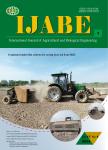Chatbots:a critical look into the future of the academia
作者机构:College of EngineeringChina Agricultural UniversityBeijing 100083China Department of Bioresource EngineeringMcGill UniversitySte.Anne de BellevueQuebecCanada Department of Food Process EngineeringNational Institute of Technology RourkelaRourkela 769008India School of Artificial IntelligenceBeijing University of Posts and TelecommunicationsBeijing 100876China School of Food and Biological EngineeringJiangsu UniversityZhenjiang 212013China
出 版 物:《International Journal of Agricultural and Biological Engineering》 (国际农业与生物工程学报(英文))
年 卷 期:2024年第17卷第2期
页 面:287-288页
核心收录:
学科分类:0502[文学-外国语言文学] 050201[文学-英语语言文学] 05[文学]
基 金:financially supported by the 2115 Talent Development Program of China Agricultural University
主 题:ChatGPT AI generative models academia ethical and moral restraints
摘 要:Like every other societal domain,science faces yet another reckoning caused by a bot called ChatGPT(Chat Generative Pre-Trained Transformer).ChatGPT was introduced in November 2022 to produce messages that seem like they were written by humans and are *** the release of the latest version of ChatGPT called GPT-4,and other similar models such as Google Bard,Chatsonic,Collosal Chat,these chatbots combine several(about 175 billion)neural networks pre-trained on large Language Models(LLMs),allowing them to respond to user promptings just like ***-4 for example can admit its mistakes and confront false assumptions thanks to the dialogue style,which also enables it to write essays and to keep track of the context of a discussion while it is ***,users may be deceived by the human-like text structure of the AI models to believe that it came from a human origin[1].These chatbot models could be better,even though they generate text with a high level of ***,they produce inappropriate or wrong responses,resulting in faulty inferences or ethical *** article will discuss some fundamental strengths and weaknesses of this Artificial intelligence(AI)system concerning scientific research.



